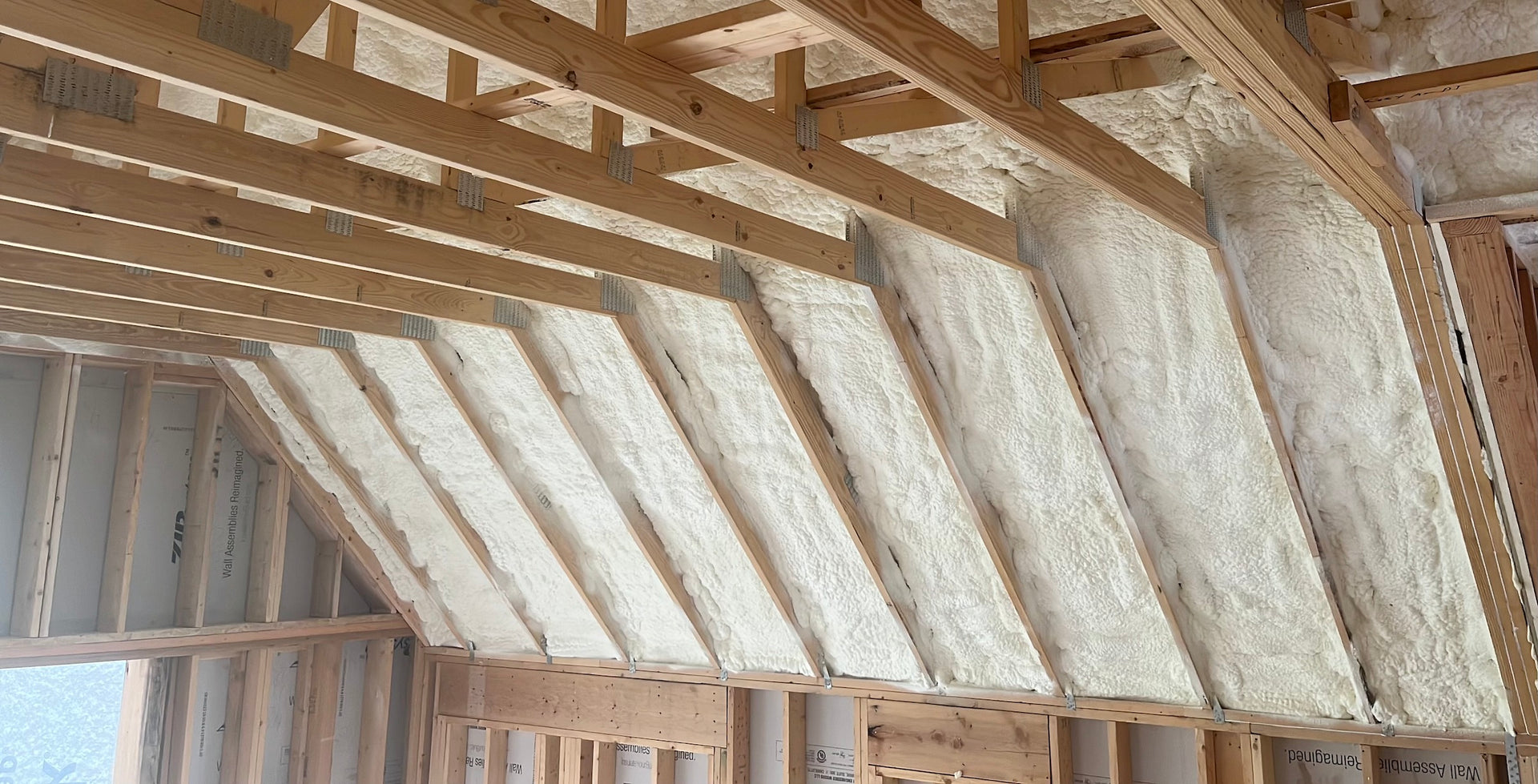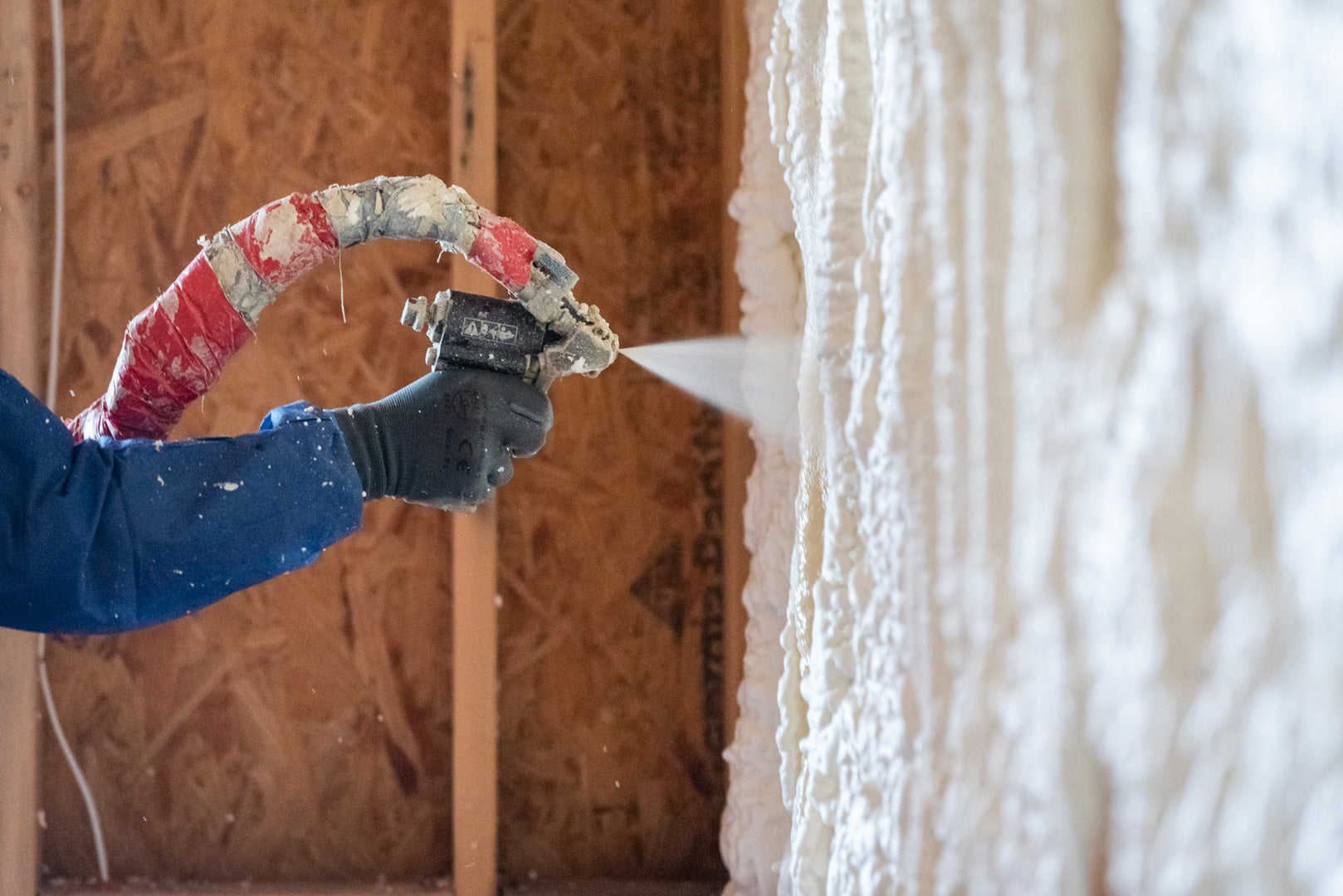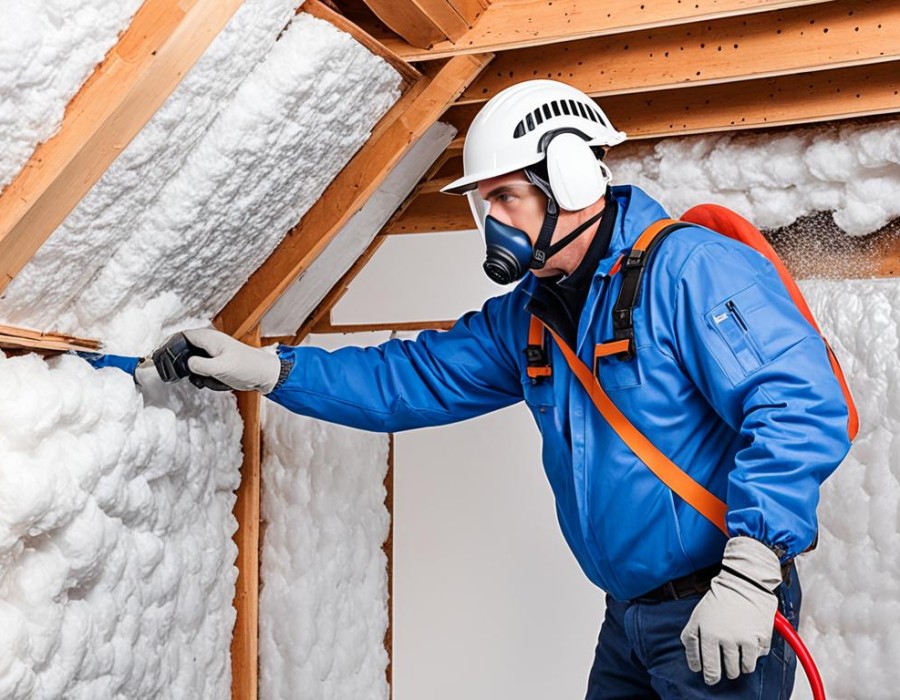New insulation, particularly modern spray polyurethane foam (SPF), consistently outperforms older spray foam installations due to major advancements in chemical formulas, application technology, and the industry's understanding of building science. While spray foam has been used for decades, the products installed 20 or 30 years ago are vastly different from today's high-performance solutions. Old foam can suffer from issues like shrinkage, reduced R-value over time, and the presence of chemicals that are no longer used.
For homeowners or buyers encountering older spray foam, it's important to recognize that a new installation isn't just a replacement; it's a significant upgrade in safety, efficiency, and longevity. This guide, which relies on the expertise of certified insulation professionals, details the seven key advantages of modern insulation systems over their outdated predecessors.
1 Safer and More Advanced Chemical Formulations
The chemistry behind spray foam has evolved dramatically. Some of the earliest foams, like Urea-Formaldehyde Foam Insulation (UFFI) used in the 1970s, were later found to off-gas harmful formaldehyde. Similarly, early closed-cell foams used chlorofluorocarbons (CFCs) as a blowing agent, which were later banned for depleting the ozone layer.
Today's spray foams are engineered for safety and environmental responsibility:
- Eco-Friendly Blowing Agents: Modern closed-cell foams use hydrofluoroolefins (HFOs), which have a very low Global Warming Potential (GWP). Open-cell foams primarily use water.
- Improved Fire Retardants: New formulas contain advanced fire retardants that meet strict modern building codes for flame spread and smoke development, enhancing the overall safety of the home.
- VOC-Free After Curing: Once cured (typically within 24 hours), modern spray foam is an inert plastic that is stable and does not release volatile organic compounds (VOCs) into the air.
2 Higher and More Stable R-Values
The R-value of insulation measures its ability to resist heat flow. While old spray foam provided good insulation, its performance could degrade over time. Early closed-cell foams were prone to "thermal drift," a phenomenon where the insulating gas within the foam's cells slowly escapes and is replaced by air, causing the R-value to drop.
Modern spray foam offers superior thermal performance that lasts:
- Stable R-Value: Today’s closed-cell foams are engineered to retain their blowing agent, resulting in a stable, long-term R-value that remains consistent for the life of the building.
- Higher R-Value Per Inch: Advances in chemistry mean that modern closed-cell SPF provides a higher R-value per inch (typically R-6 to R-7) than most other insulation materials, allowing for maximum efficiency in standard wall cavities.

3 Superior Application Technology
The equipment used to install spray foam is just as important as the chemical itself. In the past, the technology was far less precise, which could lead to an improper mixture of the two chemical components. This "off-ratio" application could result in foam that was sticky, brittle, or didn't cure properly.
Modern application technology has solved this problem. Today's spray foam rigs are equipped with sophisticated monitoring systems that:
- Maintain precise temperatures and pressures for both chemical components.
- Ensure the mixture is perfectly balanced at the spray gun.
- Allow installers to deliver a consistent, high-quality product every time.
This technological leap ensures the foam cures correctly, adheres properly, and performs exactly as designed.
4 Better Adhesion and No Shrinkage
A common failure point for some older foam formulations was dimensional instability. Over years, the foam could shrink, pulling away from the wall studs and roof rafters. This shrinkage creates significant gaps in the building envelope, destroying the air seal and allowing energy to be wasted.
Modern spray foam is specifically engineered for long-term adhesion and stability. It forms a powerful bond with the substrate and is designed to remain flexible, moving with the building's natural expansion and contraction without cracking or pulling away. This guarantees a continuous air and thermal barrier that lasts for decades.
Bonus Tip: Proper surface preparation is key to ensuring a strong bond. A professional installer will make sure the surface is clean, dry, and free of any oils or dust before applying the foam.
5 Integration with Modern Building Science
Thirty years ago, the focus was simply on adding insulation, often ignoring how a house operates as a complete system. One of the biggest mistakes in early insulation retrofits was creating an airtight building without considering ventilation. This could sometimes lead to problems with indoor air quality and moisture buildup.
A modern, certified insulation contractor is trained in building science. They install insulation as part of a holistic approach that includes:
- Controlled Mechanical Ventilation: When creating an airtight home, they will recommend and install systems like an Energy Recovery Ventilator (ERV) to provide a constant supply of fresh, filtered air while exhausting stale, humid air.
- Moisture Management: They understand how to use different types of foam (vapor-permeable open-cell vs. vapor-impermeable closed-cell) to manage moisture flow and prevent condensation within the building assembly.
6 Improved Fire Safety Standards
Building codes related to fire safety have become much more stringent over the years. Spray foam is a plastic and is therefore combustible. All spray foam installations must be covered by a 15-minute thermal barrier, such as half-inch drywall or a special intumescent coating. In the past, these codes were sometimes overlooked or not as strictly enforced. A modern professional installation will always include this critical fire safety layer, ensuring the project is fully code-compliant.
7 Enhanced Installer Training and Certification
In the early days of the industry, there was little formal training for spray foam installers. This lack of standardization contributed to many of the application errors seen in older homes. Today, the industry is highly professionalized. Organizations like the Spray Polyurethane Foam Alliance (SPFA) offer rigorous, multi-level certification programs. Hiring a contractor with SPFA-certified installers ensures that the team working on your home has been trained in:
- Spray foam chemistry and application techniques.
- Building science principles.
- Comprehensive safety protocols, including the use of personal protective equipment (PPE).
Bonus Tip: Always ask a potential contractor about their certifications. A commitment to professional training is a strong indicator of a high-quality company.

Old vs. Modern Spray Foam at a Glance
How to Handle Existing Old Spray Foam
If you are considering buying a home with old spray foam or have it in your current home, a professional assessment is crucial.
Identifying Problematic Old Foam
Look for visual clues. Foam that is dark yellow or brownish, feels crunchy or brittle to the touch, or has visibly pulled away from the framing members is a sign of a poor or degraded installation. Any foam with a lingering chemical smell is also a major red flag.
The Decision to Remove and Replace
Removing old spray foam is a labor-intensive and messy process that requires specialized equipment. It is not a DIY job. A professional contractor can assess the condition of the existing foam and determine if a full removal is necessary. In some cases, if the old foam is stable and well-adhered, it may be possible to leave it, but a full replacement is often the best long-term solution.
Questions People Ask About Spray Foam
Can new spray foam be sprayed over old spray foam?
This is not recommended. For proper adhesion and performance, spray foam needs to be applied to a clean, stable substrate like wood sheathing or drywall. Spraying over old, potentially failing foam is a recipe for problems.
What was UFFI insulation?
Urea-Formaldehyde Foam Insulation (UFFI) was a type of foam insulation used in the 1970s. It was later discovered to release formaldehyde gas as it cured and broke down, and its use in homes was banned. It looks different from modern polyurethane foam, often appearing as a chalky, crumbly substance.
Is it safe to be in a house while new spray foam is being installed?
No. Professionals require that the home be vacated by people and pets during the installation and for a 24-hour period afterward. This allows the foam to fully cure and for the area to be properly ventilated.
How can I tell if the spray foam in a home is old or new?
New spray foam is typically white or off-white. Older foam tends to yellow or darken with age. The texture can also be a clue; modern foam is consistent, while old, poorly applied foam might be uneven or have a "popcorn" texture.
Does it cost more to remove old insulation?
Yes, the removal and disposal of old insulation, especially failed spray foam, will add to the total project cost. However, it is a necessary investment for a successful and long-lasting new installation.
Investing in Modern Insulation Technology
The advancements in insulation over the last few decades are remarkable. Opting for a new, professionally installed insulation system is one of the best ways to improve a home's energy efficiency, comfort, and indoor air quality. While old spray foam may have been a step up at the time, it simply can't compete with the safety and performance of modern systems, making a professional evaluation a logical next step for homeowners with older installations.
Get an Expert Evaluation of Your Insulation
If you have old spray foam in your home or are considering an insulation upgrade, a professional assessment is the best place to start. A certified contractor can evaluate your existing conditions and provide a clear, science-based recommendation. For homeowners seeking expert advice, the team at LMC Insulation has the training and experience to handle both the removal of old insulation and the installation of modern, high-performance systems.
To schedule a consultation, you can reach their specialists at (479) 351-6175 or by sending an email to [email protected].
Reviewer: Samuel Harris has worked across various roles in spray foam insulation over 11 years. His review focused on how businesses can better present their services to both new and returning clients.





Comments